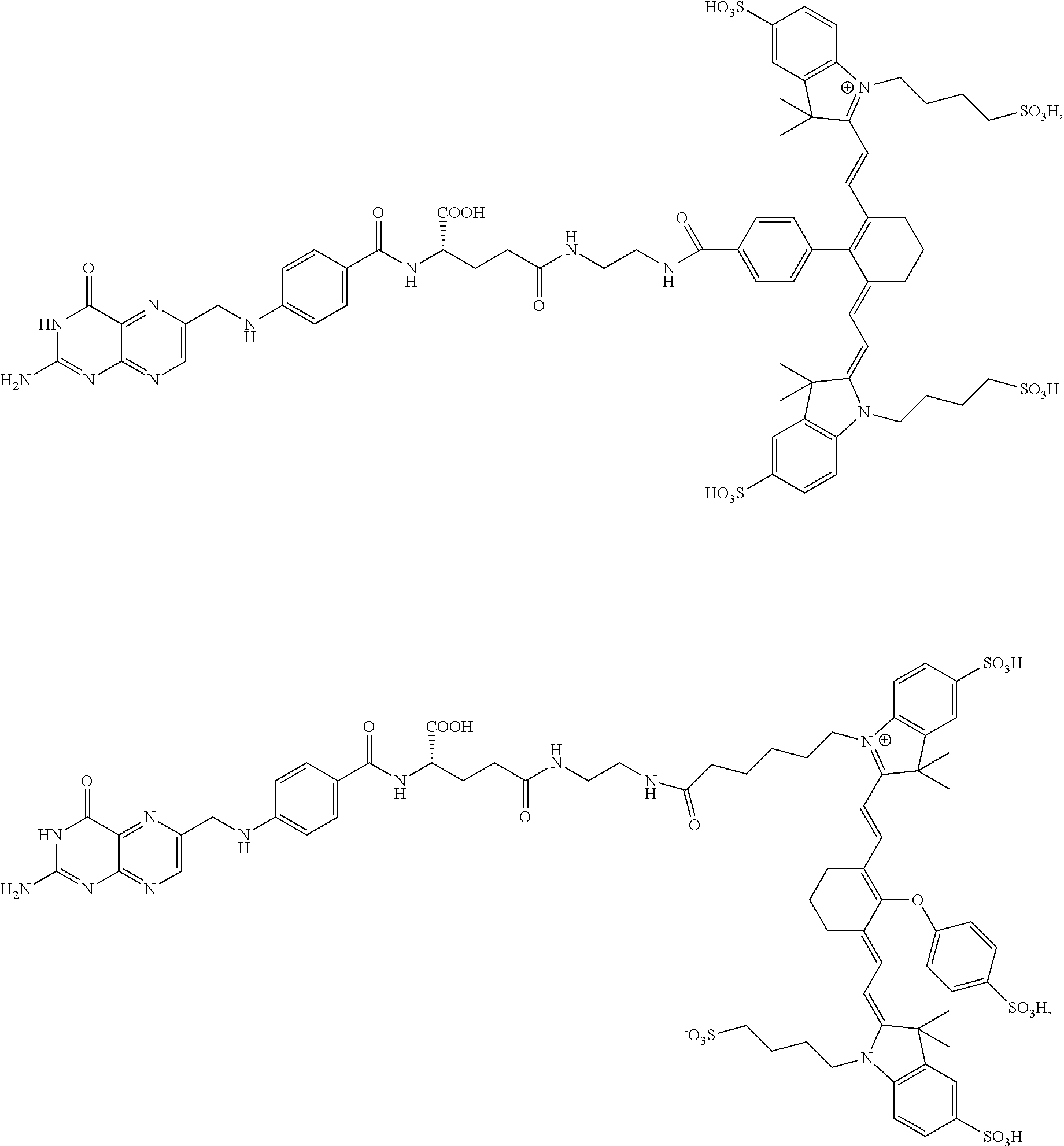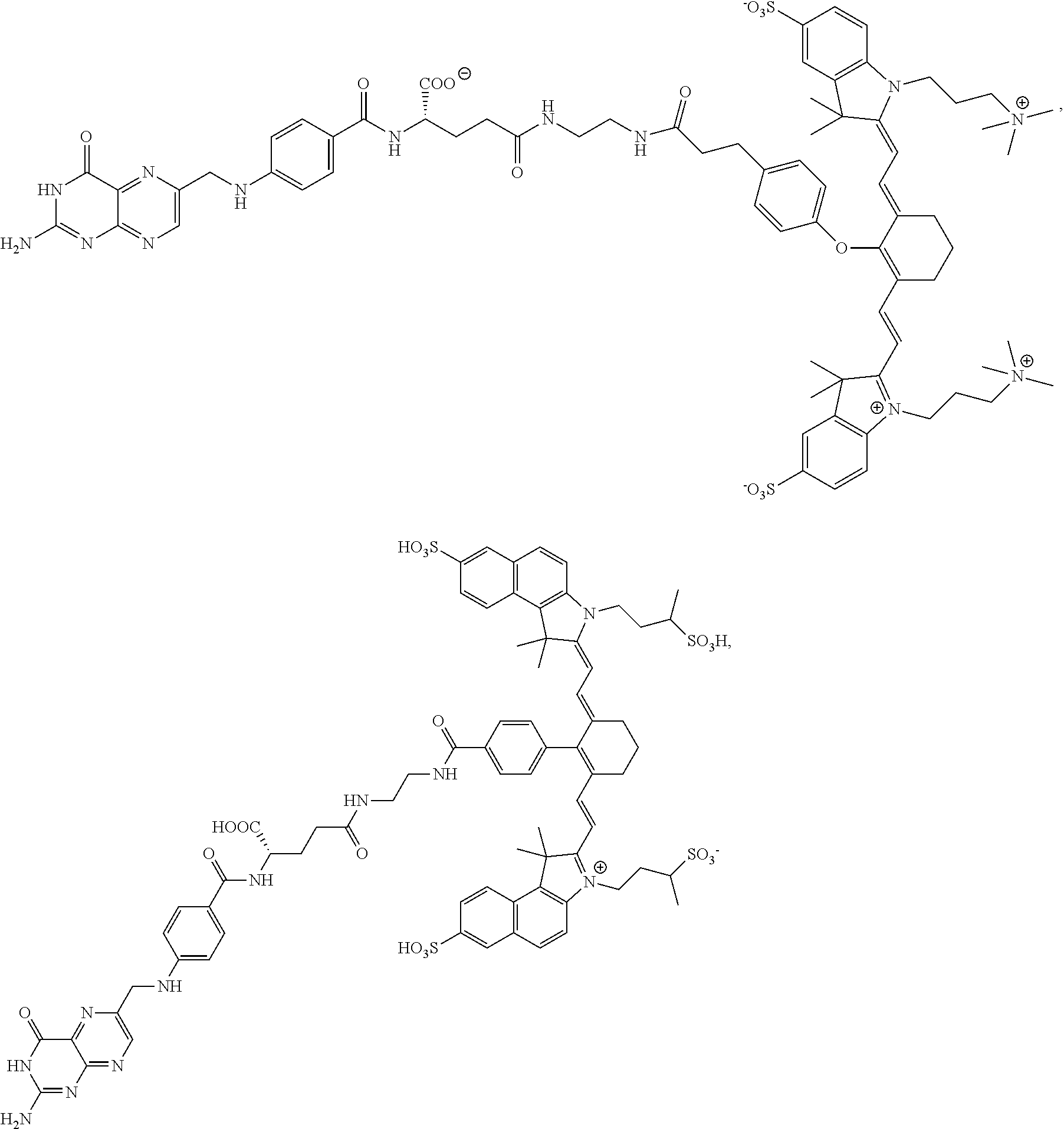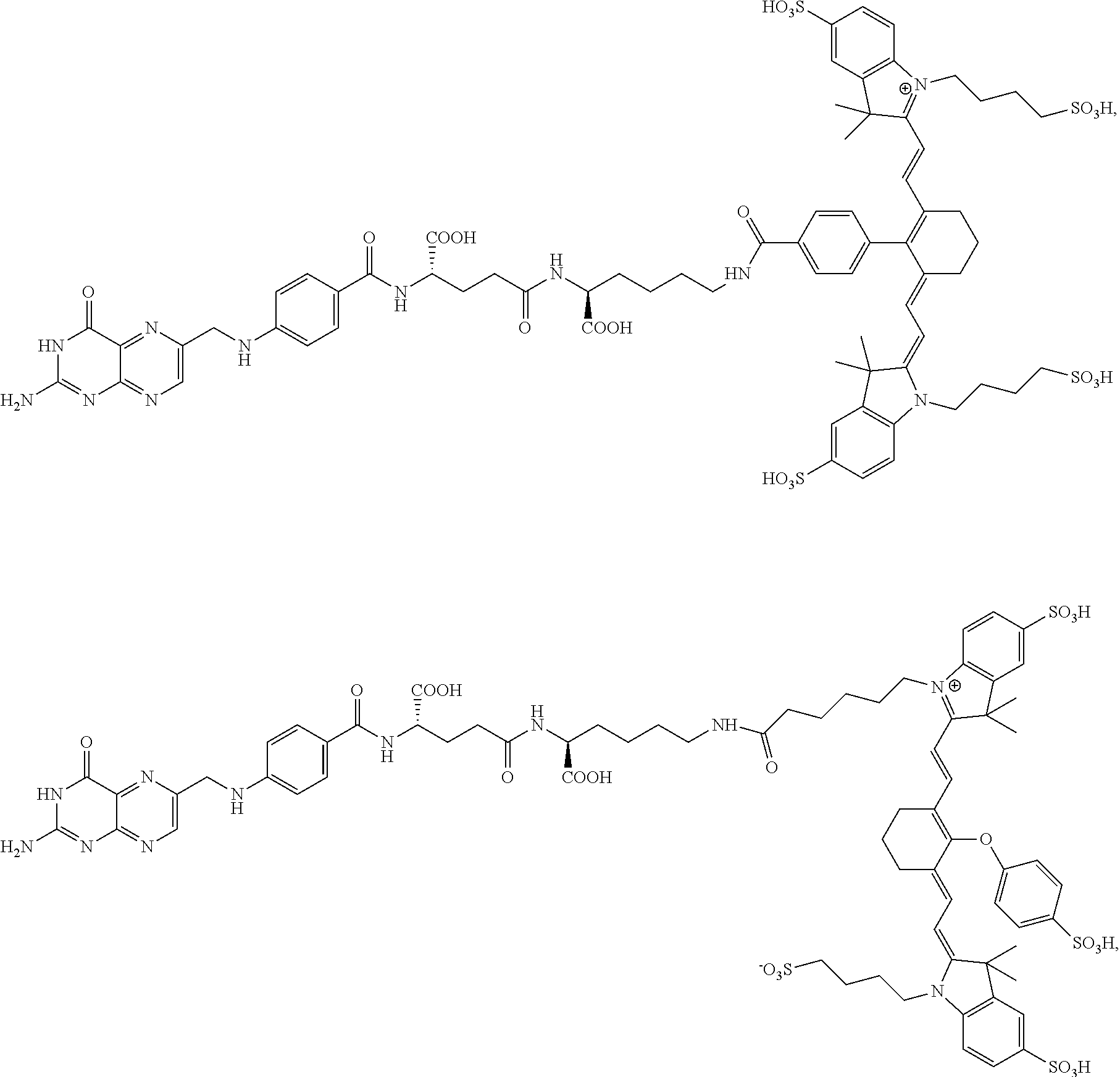Synthesis and composition of amino acid linking groups conjugated to compounds used for the targeted imaging of tumors
a technology of amino acid linking group and tumor imaging, applied in the field of diagnosis, can solve the problems of recurrence and often death of diseases, inability to optimally guide intra-operative image-guided surgery, and probes in the visible light spectrum (400-600 nm), and achieve enhanced fluorescence intensity, improved binding affinity for folate receptors, and beneficial functional effects
- Summary
- Abstract
- Description
- Claims
- Application Information
AI Technical Summary
Benefits of technology
Problems solved by technology
Method used
Image
Examples
example 1
Development of Tumor-Targeted Near Infrared Dyes for Fluorescence Guided Surgery
[0131]Complete surgical resection of malignant disease is the only reliable method for intervention in cancer. Unfortunately, quantitative tumor resection is often limited by a surgeon's ability to locate all malignant disease and distinguish it from healthy tissue. Fluorescence guided surgery has emerged as a tool to aid surgeons in the identification and removal of malignant lesions. While non-targeted fluorescent dyes have been shown to passively accumulate in some tumors, the resulting tumor-to-background ratios are often poor and the boundaries between malignant and healthy tissues can be difficult to define. To circumvent these problems, the present disclosure shows development of high affinity tumor targeting ligands that bind to receptors that are over-expressed on cancer cells and deliver attached molecules selectively into these cells.
[0132]In the present example, use of two tumor-specific targ...
example 2
Design and Synthesis of the Optimal Folate Conjugated Near-Infrared Probe with High Targeting Affinity and Sensitivity for Fluorescence Guided Cancer Surgery
[0161]Even with the sophisticated tools for tumor identification, many malignant nodules still escape detection, leading to disease recurrence and often death. Motivated by a need for improved tumor identification, two new approaches for intraoperative visualization of malignant disease have been introduced. In the first, a quenched fluorescent dye is injected systemically into the tumor-bearing animal, and release of the quenching moiety by a tumor-specific enzyme, pH change, or change in redox potential is exploited to selectively activate fluorescence within the malignant mass. In the second, a fluorescent dye is conjugated to a tumor-specific targeting ligand that causes the attached dye to accumulate in cancers that over-express the ligand's receptor. Examples of tumor targeting ligands used for this latter purpose include ...
example 3
[0167]Comparative Analysis of OTL-0001 (FA-EDA-LS288), OTL-0002 (FA-EDA-IR800), OTL-0003 (FA-EDA-ZW800), and OTL-0004 (FA-EDA-Kodak2)
[0168]Material and Methods:
[0169]KB cells (a human nasopharyngeal cell line) were obtained from American type culture collection (Rockville, Md.) and grown as a monolayer using folate free 1640 RPMI medium containing (Gibco, NY) 10% heat-inactivated fetal bovine serum (Atlanta Biological, GA) and 1% penicillin streptomycin (Gibco, NY) in a 5% carbon dioxide: 95% air-humidified atmosphere at 37° C. for at least six passages before they were used for the assays.
[0170]Athymic female nude mice (5 weeks old, 18-20 g) were purchased from Harlan (IN) and maintained on gamma-irradiated folate-deficient special diet (Teklad, WI) for at least 2 weeks before the start of the study. Animals were housed 5 / cage in a barrier, pathogen-free cloaked rack. Autoclaved tap water and food were given as needed. The animals were housed in a sterile environment on a standard ...
PUM
| Property | Measurement | Unit |
|---|---|---|
| infrared light wavelength | aaaaa | aaaaa |
| pKa | aaaaa | aaaaa |
| pH | aaaaa | aaaaa |
Abstract
Description
Claims
Application Information
 Login to View More
Login to View More - R&D
- Intellectual Property
- Life Sciences
- Materials
- Tech Scout
- Unparalleled Data Quality
- Higher Quality Content
- 60% Fewer Hallucinations
Browse by: Latest US Patents, China's latest patents, Technical Efficacy Thesaurus, Application Domain, Technology Topic, Popular Technical Reports.
© 2025 PatSnap. All rights reserved.Legal|Privacy policy|Modern Slavery Act Transparency Statement|Sitemap|About US| Contact US: help@patsnap.com



